Montevideo is dying of thirst
The Paso Severino Dam reservoir – the main source of drinking water for the capital of Uruguay – only has 2% of its reserves left
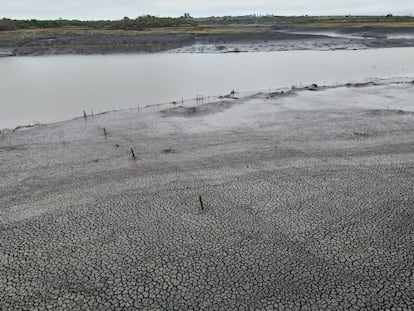
The days of clean drinking water flowing through Montevideo’s taps could be numbered.
Last week, the government of Uruguay announced – without specifying when or for how long – that, at some point, the tap water would stop being fit to drink. The authorities still harbor the hope of not reaching that extreme, counting on rainfall to cushion the effects of the water crisis that has been plaguing the country for three years. So far, however, the weather hasn’t been kind to the Uruguayans.
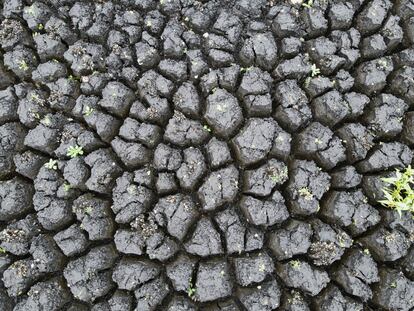
The prolonged climatic setback has wreaked havoc in the countryside. It has also caused the main water supply in the south of the country – the Paso Severino Dam reservoir – to reach its lowest levels. The latest official report indicates that, at the moment, the reserve doesn’t exceed 1.1 million cubic meters of water, when it has the capacity to store 67 million. This means that less than 2% of the reserve water supply remains.
Along with this data, the report presents another problematic statistic: the inhabitants of Montevideo and the metropolitan area – 1.7 million people in total, half of the country’s population – consume approximately 500,000 cubic meters of water per day. That is, half the amount that is available in the reservoir.
The Paso Severino reservoir – which dams water from the Santa Lucía River – wouldn’t have been able to sustain this demand without the measures adopted at the end of April by the state-owned Sanitary Works (OSE). To “stretch” the reserves of Paso Severino, OSE officials explained, its fresh waters were mixed with waters from the Río de la Plata, which – due to oceanic influence – are notoriously brackish. Since then, the running water in the area has been a bit salty. It’s still suitable for consumption… though not for everyone.

The Ministry of Health raised the permitted levels of sodium per liter of water to twice the normal rate, while also warning hypertensive and pregnant women – along with other vulnerable groups – to completely refrain from consuming tap water. Instead, it’s recommended that they drink bottled water.
Two months later, the Uruguayan firm Radar Scanntech points out that the sale of bottled water in the country has increased fivefold… and not only due to the vulnerable population’s consumption. According to a local survey, more than 50% of the capital’s residents stopped drinking tap water, because they simply cannot tolerate its salty taste.
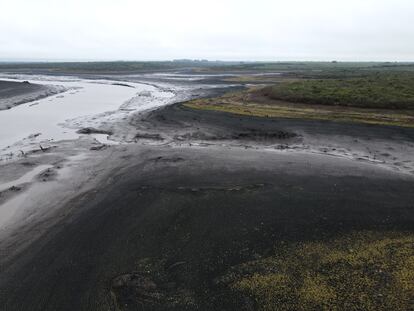
“We ask you to grant us the necessary rain,” Uruguayan Cardinal Daniel Sturla implored via Twitter two weeks ago. He was followed by some clueless politician, who encouraged the inhabitants of the country – the most secular in Latin America – to pray for the longed-for rain. The prayers went unanswered.
Without an alternative to Paso Severino, specialists assume that the running water will cease to be drinkable in a matter of days. For the government, if it doesn’t rain, this situation will last as long as it takes for a particular infrastructure project to be completed – one that will allow for the transfer of fresh water from the San José River to the Santa Lucía River. The project was announced on June 19 by President Luis Lacalle Pou. That day, the government declared a water emergency and ensured that the supply of drinking water was guaranteed in hospitals, nursing homes and childcare centers. Likewise, 21,000 beneficiaries of the Ministry of Social Development will receive two free liters of bottled water each day. For all residents, bottled water is now exempt from taxes. The president has also sent a bill to the General Assembly, which will create a water emergency fund and oversee the delivery of bottled water to 500,000 low-income people.
Beyond the halls of power, events have taken place in Montevideo that, until a few months ago, were difficult to imagine. There are crews of workers looking for underground water in the main parks of the city. Appliance repair stores have accumulated broken water heaters, due to the salinity of running water. “It’s not a drought – it’s looting!” exclaimed demonstrators, protesting against what they consider to be the extraction of water resources by multinational companies. This is all happening amidst the worst drought in 70 years.
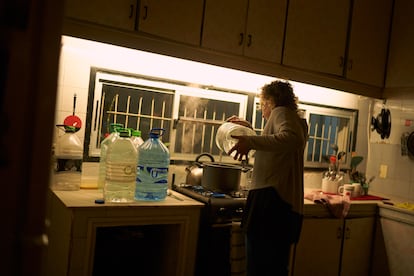
Over the last few critical weeks, the opposition Frente Amplio (FA, the Broad Front) recalled that former President Tabaré Vázquez (2005-2010, 2015-2020) – a member of the FA – handed over the Casupá project to his successor, Lacalle Pou. The project involved building another dam on the Santa Lucía River, to increase the freshwater reserves. According to the FA, studies on the feasibility of this option began in 2013, while the preparatory process ended in 2019, with an $80 million loan granted by CAF-Development Bank of Latin America. But the Casupá Dam was never built.
The current administration rejected that project and prioritized another – one that will involve the construction of the Neptuno water treatment plant, in the south of the country. This work – to be done by a private contractor – will take brackish water from the Río de la Plata (the River Plate, the estuary formed by the confluence of the Uruguay River and the Paraná River), treat it and supply the metropolitan area. Its construction is set to start at the end of 2023. “Let’s celebrate that a decision has been made and that, in a short time, in this or the next government (2025-2030), we will have unlimited drinking water capacity,” said President Lacalle Pou.
The Neptuno project has been praised by the government, but not by the opposition or a big part of society, who see the initiative as the partial privatization of water management – something that’s prohibited by the Constitution. In addition, a group of scientists from the local University of the Republic note that the project “presents a series of environmental problems” and that the salinity of the water of the Río de la Plata “far exceeds the acceptable [levels] to be made drinkable.”
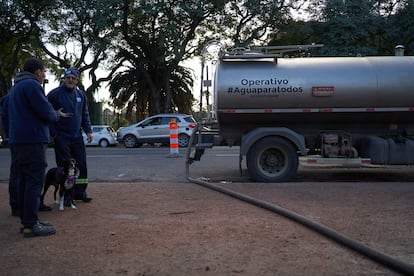
The Casupá vs. Neptuno debate has been temporarily relegated, due to the imminence of the tap water ceasing to be suitable for consumption. At the moment, other questions are being raised by consumers. Some are wondering if they should have to pay their water bill, when the product is undrinkable. Others have demanded that large industries be charged a fee for the use of public domain water (surface or groundwater) and that the proceeds be invested in public works. Such measures are mentioned in the National Water Law of 2009, but have never been regulated.
With an adverse rain forecast, the government has attempted to speed up the water transfer works that will take at least a month. Meanwhile, the state company OSE is accelerating the repair of outdated pipes, through which 40% of the drinking water is lost.
“We should have started earlier,” lamented José Mujica, the former president of Uruguay (2010-2015), while addressing local media. “We all fell asleep. Let’s share the responsibility.”
Sign up for our weekly newsletter to get more English-language news coverage from EL PAÍS USA Edition
More information

